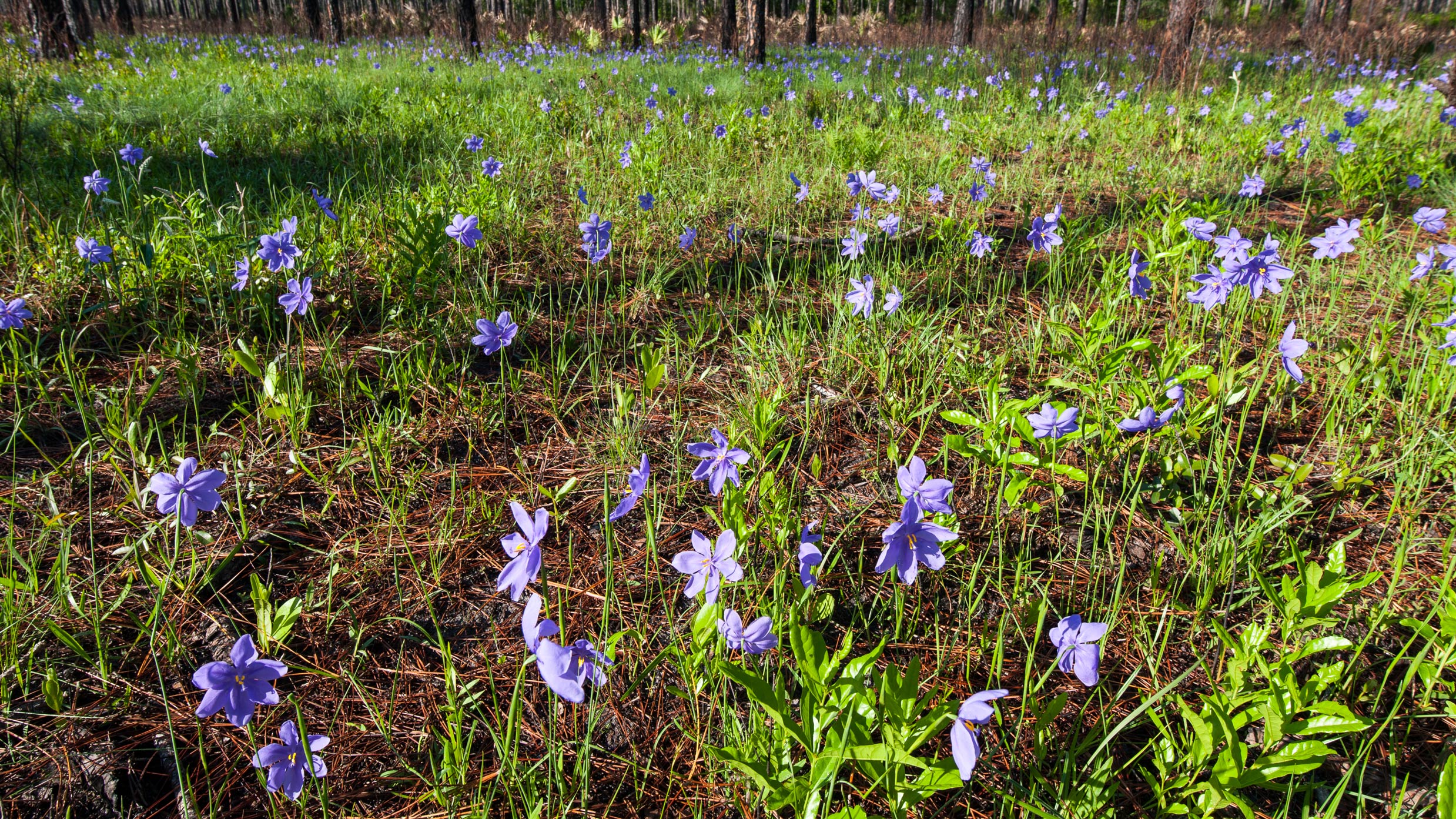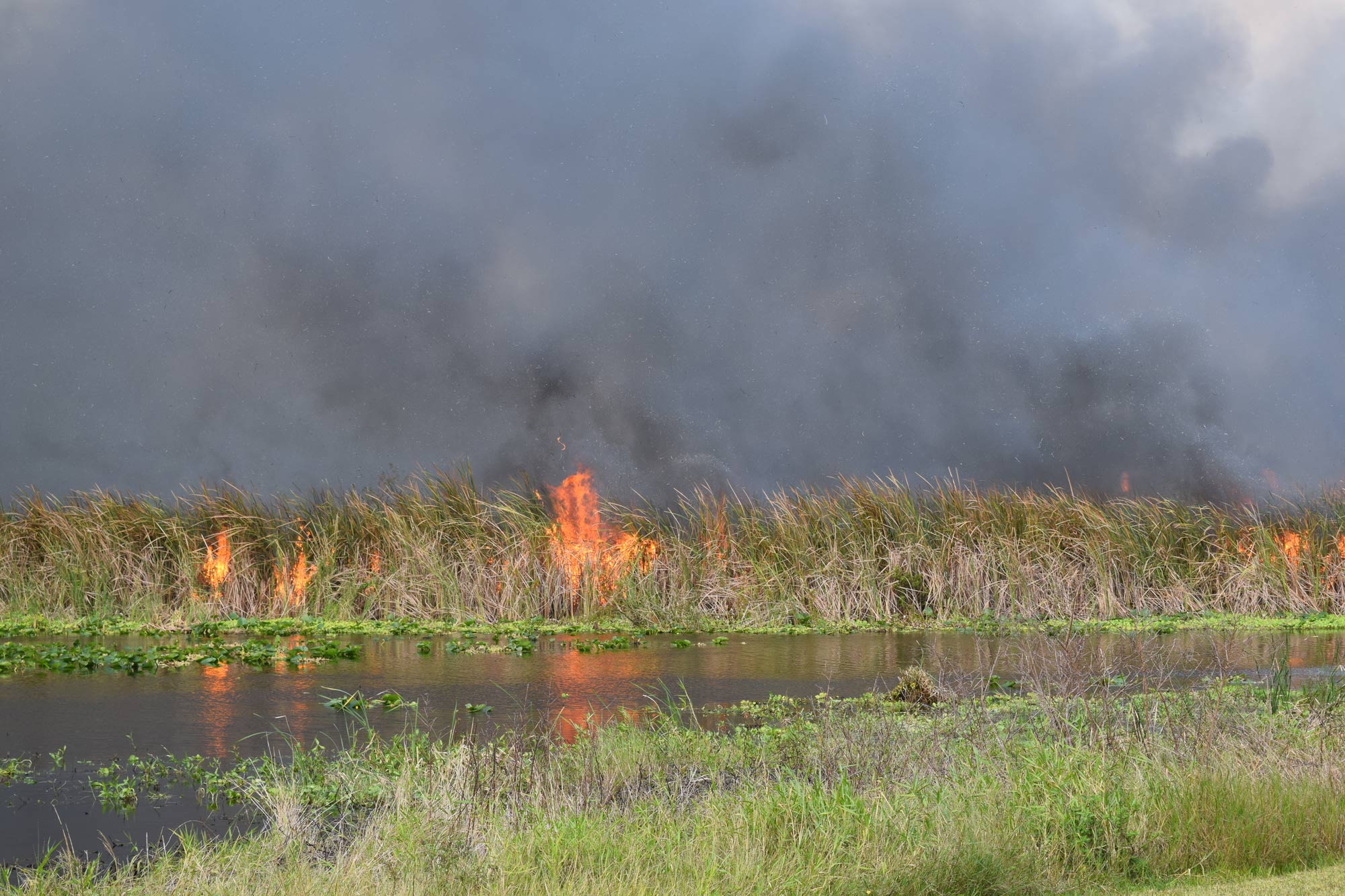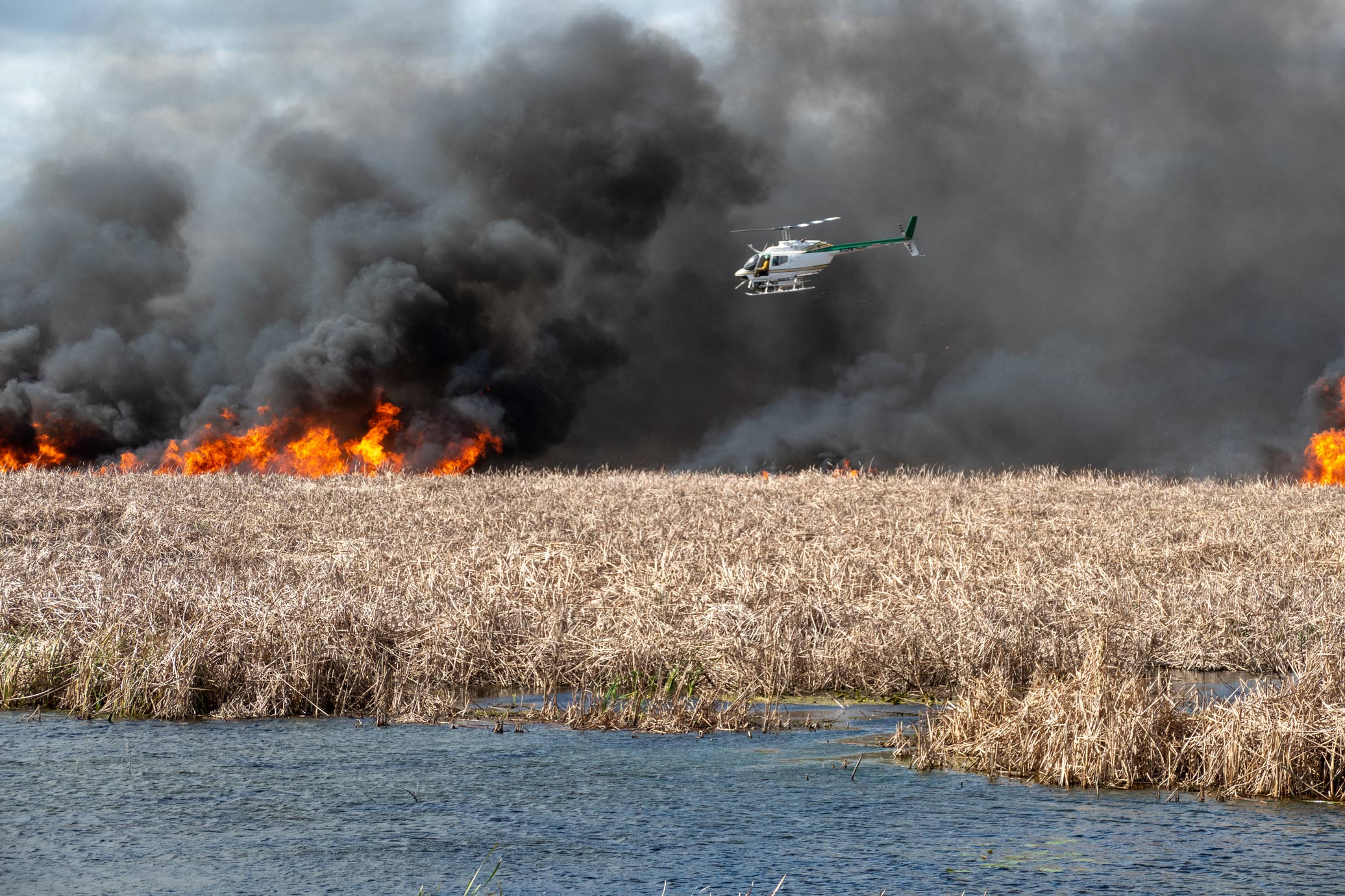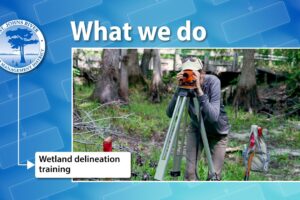Fire is as important to Florida’s environment as rain and sunshine — recycling nutrients, maintaining habitat for threatened and endangered species and promoting plant cycles like seeding, flowering and new growth. For millennia, the plants and animals of Florida have lived with fire (as well as hurricanes and tornados), and these plants and animals adapted and evolved to thrive with frequent fires.
St. Johns River Water Management District Land Resource Specialist Chris Kinslow explains it this way. “Because of the near-constant disturbance, every little thing has to find a niche — there’s stability in the disturbance. Forests here burn every 2–4 years on average.” When a frequent disturbance is the norm, removing the disturbance is disruptive.
Florida is the lightning capital of the world, and lightning-triggered fires are common. For generations, the people of Florida have used fire to shape and maintain the landscape. “Today, Florida is a vanguard in the use of prescribed fire,” says Kinslow. According to the Florida Forest Service (which manages prescribed burning in the state), an estimated 2.1 million acres are treated with prescribed fire annually, some of the highest acreage in the country. Access and terrain influence this number, and a long tradition of intentional fire use in Florida has remained, despite an era of fire suppression elsewhere in the country.
People have used fire for as long as they’ve lived in what we now call Florida. Fire was a tool — it cleared underbrush and promoted grasslands that functioned as valuable hunting grounds. Native Americans saw the value of fire — they lived with it and recognized it as a force for maintaining the environment.
Early Florida settlers adopted the practice; it fits well with how they used the land. The Florida frontier lifestyle centered on free-ranging cattle. Until the early 1900s, most cattle owners allowed their animals to wander free range in search of the best grass rather than fencing them in. Frequent fire promoted grass and removed underbrush that could host ticks. For these settlers, maintaining the forest for grazing was as much a community affair as roundups — the practice of woods burning, as it was known, was common.
Kinslow has heard accounts of cow hunters (the Florida term for a cowboy) riding from Palatka to Green Cove Springs, lighting and tossing matches in the grass to start fires. “Everyone lived with and expected fire,” he says. “People swept their yards to keep dried leaves and fuel away from their houses.”
Intentional fire was also used to protect the turpentine industry in Florida and throughout the South. Pine trees were stripped of a section of their bark so the resin would ooze out into a clay pot or box, that would be processed and used as caulking and waterproofing for wooden ships. These pitch-dribbling trees were incredibly flammable, so the workers fought wildfire with fire by raking around the trees and lighting intentional fires to remove grass and brush that could otherwise spread wildfires.
But explosive and damaging wildfires in the western U.S. captured the country’s attention.
In 1910, a fire known as the Big Blowup killed 78 firefighters in northern Idaho and burned several towns to the ground. According to fire historian Stephan Pyne’s writings, this event, occurring when the U.S. Forest Service was in its infancy, shaped fire suppression policy for decades. By the early 20th century, the rest of the country saw fire as a purely destructive force that needed to be stopped. And as the tools and technology to fight fires advanced, wildfires became less frequent. The intentional use of fire was considered backward and destructive, while Smokey Bear’s fire prevention message was hailed.
Nonetheless, back in Florida and the Southeastern United States, woods burners kept at it, maintaining land with fire. Cow hunters continued burning for grazing, even as the industry shifted from free-ranging cattle to fencing. Then a naturalist, Herbert Stoddard, began to advocate for the role of fire in the ecosystem.
Stoddard was investigating the decline of bobwhite quail in southern Georgia and northern Florida. Through his rigorous studies, he found the principal reason for the dwindling population was a lack of fire in the landscape. Bobwhite quail depend on the flush of grasses and plants that appear following a fire. The woody shrubs that move in once the fire regime is disrupted provide no habitat. His findings prompted the use of prescribed burns as a tool for game management in the Southeast. Private landowners either kept up or returned to the practice. Meanwhile, Stoddard spent the rest of his career researching and advocating for the use of prescribed fire. He became one of the founders of the Tall Timbers Research Station near Tallahassee, a hub for prescribed fire science today.
Scientists in south Florida continued to examine the function of fire, even as Smokey Bear evangelized the risk of wildfires. A 1958 study by Everglades National Park found that fire had a role in shaping certain ecosystems, and subsequently, they conducted the first-ever prescribed fire in a national park. As perceptions and acceptance of the important role of fire began to shift nationally, Floridians embraced the practice of using prescribed burns for land management. In 1990, the state of Florida passed landmark legislation protecting responsible burners from liability. The intent of the law was to increase the amount of fire-dependent ecosystems that could be burned. Through the creation of burn collectives, training and certification processes, private landowners and agencies are better able to safely conduct prescribed burns.
Today, prescribed fire is an essential part of the District’s land management program. “It’s important for the ecology, as well as protecting communities from disastrous wildfires that burn out of control,” says Kinslow. He’s seen this himself — instances where wildfires fizzle out as they reach a section of land that was maintained with a prescribed burn.
Over 30 District Land Resources staff are the primary District “Fire Team.” All go through extensive training to understand fire dynamics and techniques to manage the burn appropriately for each situation. Sometimes they use a drip torch to light strips of fire. Helicopters are another tool, carrying chemical combustibles about the size of a ping-pong ball. These types of combustibles can also be launched from a compressed air gun. By varying the ignition technique, and carefully considering weather conditions, burn bosses control the intensity of the fire to obtain desired effects. As tools advance, prescribed fire becomes more efficient and manageable. This is important in a growing Florida, where development and conservation lands are neighbors.
But for Kinslow, he finds meaning in knowing he’s continuing a tradition of land management. “I think of it like riding a horse and lighting the woods on fire, that’s what we’re attempting to recreate on a smaller scale.”
You can learn more about prescribed burning on our website.








